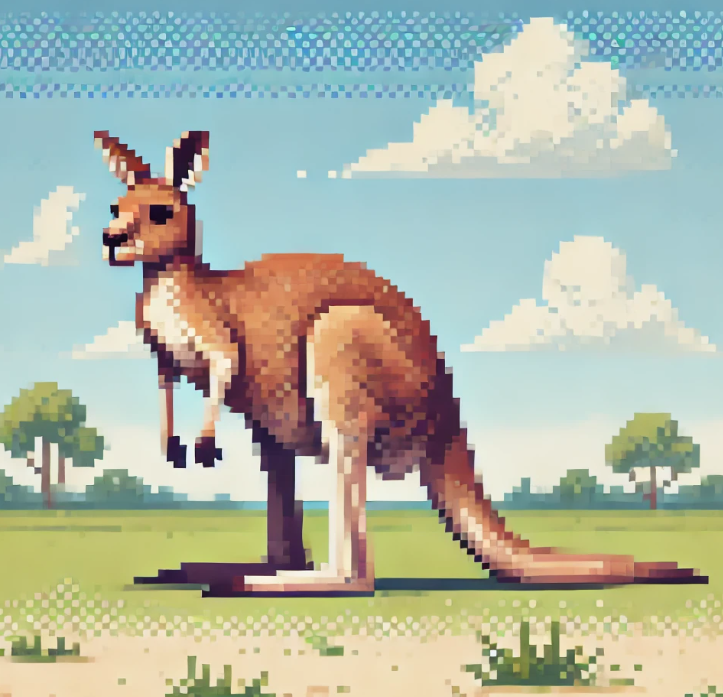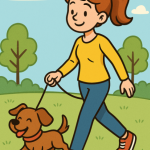
Protecting Australia’s Wildlife: A New Look at Wildlife Veterinary Care
Australia’s diverse and unique wildlife is under constant threat from human activities. Whether it’s a kangaroo hit by a car, a bird caught in netting, or a reptile attacked by domestic pets, animals across the country face countless dangers every day. The role of wildlife hospitals in responding to these incidents is crucial. New research from two veterinary hospitals in Australia sheds light on the types of wildlife most often brought in for care, the causes of their injuries, and the challenges faced by veterinarians trying to rehabilitate these animals.
While we can’t stop every accident, understanding the needs and challenges of wildlife care allows veterinarians and wildlife carers to provide more effective support. This research emphasizes the importance of focusing resources on animals that need it the most and suggests strategies for improving outcomes, particularly for trauma-affected wildlife.
What the Research Tells Us About Wildlife Patients
The study analyzed data from Byron Bay Wildlife Hospital in New South Wales and Adelaide Koala and Wildlife Centre in South Australia, two hospitals situated near large cities. Over the study period, the hospitals admitted thousands of wildlife patients, mostly birds and mammals, followed by reptiles and amphibians. Birds were the most common patients, accounting for 54% and 60% of admissions at each hospital, while mammals made up around 19% to 41% of the caseloads.
The most frequent reason for wildlife hospital admission? Trauma—caused by car collisions, attacks from domestic pets, and entanglement in human-made objects. Birds and reptiles were overrepresented in trauma cases, with car strikes being the most common cause of injury. Sadly, the overall mortality rate for trauma patients was high, with nearly 50% of animals not surviving their time in care. This includes animals that had to be euthanized because their injuries were too severe for recovery.
Orphaned animals also made up a significant portion of the hospital’s patients, particularly in the spring when young animals are more vulnerable. Interestingly, orphans had a much better survival rate than trauma patients, suggesting that hospitals might benefit from focusing on animals with treatable conditions rather than those suffering from severe injuries.
The Challenges of Wildlife Rehabilitation
Caring for wildlife is no easy task. Unlike domestic pets, whose medical needs are relatively well understood, wildlife often present a variety of challenges. Each species has different care requirements, and veterinarians frequently have to make difficult decisions about which animals have the best chance of recovery.
One of the key challenges highlighted by the study is the limited resources available to wildlife hospitals. Staff at these facilities often face time and budget constraints, making it difficult to provide the intensive care many animals require. Additionally, gaps in knowledge about wildlife health care—combined with the sheer number of patients arriving with traumatic injuries—make it difficult to achieve high survival rates.
Another issue is the strain on resources caused by the admission of animals that don’t actually need medical care. For example, some animals brought in by well-meaning citizens are perfectly healthy. While their concerns are valid, hospitals need to focus on animals with urgent medical needs. This is why the study recommends limiting admissions for animals that do not require immediate veterinary attention. By doing so, hospitals can ensure they provide the best possible care to those that truly need it.
Seasonal Trends and Their Impact on Admissions
The study also identified clear seasonal trends in wildlife admissions. For instance, reptiles were more frequently admitted during warmer months, while bird admissions peaked in spring. These patterns can help veterinary hospitals anticipate the types of patients they will see throughout the year and better allocate resources.
For example, fledgling birds leaving their nests in spring are more likely to be found by people who mistakenly believe the birds need help, leading to an influx of orphaned animals at this time of year. Knowing these trends allows hospitals to plan ahead, ensuring they are prepared to provide care during peak admission periods.
Improving Wildlife Care Through Focused Resources
One of the most significant takeaways from the study is the need for wildlife hospitals to focus their efforts on animals with the highest chances of recovery. Trauma victims, particularly those injured in car accidents or attacked by domestic pets, often have low survival rates despite receiving intensive care. By prioritizing orphans and animals with treatable conditions, hospitals can make the most of their limited resources and improve their overall success rates.
This approach not only benefits the animals but also ensures that hospitals are better equipped to manage the influx of patients, particularly during busy seasons. Additionally, it encourages hospitals to work closely with wildlife carers and the public to educate people about when it’s appropriate to bring an animal to the hospital and when to leave it in the wild.
Practical Takeaways for Pet Owners and Wildlife Enthusiasts
So, what does this research mean for pet owners and wildlife enthusiasts? First and foremost, it highlights the importance of being cautious and aware of our impact on the environment. Whether it’s driving more carefully in areas where wildlife is present, securing trash and other materials that might entangle animals, or keeping pets indoors to reduce the risk of attacks, there are steps we can all take to protect wildlife.
Additionally, if you encounter a wild animal that appears to be in distress, it’s crucial to assess the situation carefully. While your first instinct might be to help, not all animals need intervention. In many cases, it’s better to leave wildlife alone or contact a professional who can assess the situation.
By understanding the challenges faced by wildlife hospitals and taking steps to reduce harm, we can all play a part in protecting Australia’s incredible wildlife.
Join the Conversation
Have you ever rescued a wild animal? What steps do you think we can take as a community to reduce the impact of human activities on wildlife? Share your thoughts and experiences in the comments below or join the conversation on social media!




